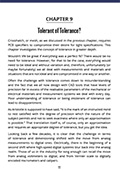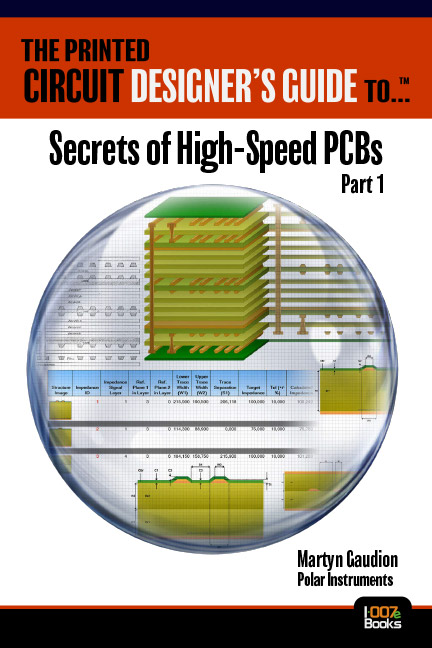If you’re a PCB designer or design engineer, chances are you’re probably dealing with high-speed PCBs and their attendant issues. This book is a must-read not just for designers, but for anyone involved with, or confused by, high-speed PCBs: purchasing agents, salespeople, marketing professionals, recent graduates, etc.
This micro eBook is a compilation of columns written by Martyn Gaudion, CEO of Polar Instruments, for The PCB Design Magazine over several years. Martyn examines complex signal integrity challenges, modelling and measurement issues, transmission line theory, the effects of glass weave on signal integrity, and much more.
ISBN: 978-0-9796189-6-3
 Martyn Gaudion is the managing director of Polar Instruments Ltd. He began his career in the early 1980s at Tektronix, where he was responsible for test engineering on high-bandwidth portable oscilloscopes. During his time at Tektronix, he gained widespread experience in PCB assembly and was extensively involved with the introduction of surface mount technology.
In 1990, Gaudion joined Polar, where he was responsible for the design and development of the Toneohm 950, Polar’s multilayer PCB short circuit locator. He became marketing manager at Polar during 1997 as the market for controlled impedance test became a major section of Polar’s product range. He was appointed sales and marketing director in 2001 and CEO in 2010. Gaudion also writes occasional articles for a number of PCB industry publications, and regularly contributes to IPC’s High-Speed High-Frequency standards development activities.
Gaudion is a chartered company director and a fellow of the London-based IoD (Institute of Directors). In 2016, he was appointed vice chairman of the European Institute of Printed Circuits (EIPC).
Martyn Gaudion is the managing director of Polar Instruments Ltd. He began his career in the early 1980s at Tektronix, where he was responsible for test engineering on high-bandwidth portable oscilloscopes. During his time at Tektronix, he gained widespread experience in PCB assembly and was extensively involved with the introduction of surface mount technology.
In 1990, Gaudion joined Polar, where he was responsible for the design and development of the Toneohm 950, Polar’s multilayer PCB short circuit locator. He became marketing manager at Polar during 1997 as the market for controlled impedance test became a major section of Polar’s product range. He was appointed sales and marketing director in 2001 and CEO in 2010. Gaudion also writes occasional articles for a number of PCB industry publications, and regularly contributes to IPC’s High-Speed High-Frequency standards development activities.
Gaudion is a chartered company director and a fellow of the London-based IoD (Institute of Directors). In 2016, he was appointed vice chairman of the European Institute of Printed Circuits (EIPC).
Polar Instruments specializes in designing EDA and measurement tools which simplify the design, fabrication, testing and specification of high-speed printed circuit boards (PCBs). Polar’s innovative product line includes the industry standard Controlled Impedance Test System (CITS), which provides the global PCB industry with an easy-to- use test system for high-speed digital and RF boards, as well as class-leading tools for fast and accurate design and testing of impedance and insertion loss controlled PCBs. Polar Speedstack is the layer stack-up design and documentation tool of choice for many designers, fabricators and PCB technologists. Established in 1976, Polar Instruments now has operations and long term channel partners in the US, UK, Europe and Asia Pacific.
Related Video:
 Rick Hartley Principal, RHartley Enterprises
Rick Hartley Principal, RHartley Enterprises
Rick Hartley is the principal of RHartley Enterprises, through which he consults and teaches internationally. Hartley’s focus is on the correct design of circuits and PC boards to prevent and/or resolve EMI, noise, and signal integrity problems. His career has focused on telecommunications, [...]
 Eric Bogatin Dean, Signal Integrity Academy
Eric Bogatin Dean, Signal Integrity Academy
Professor Bogatin has a BS in physics from MIT and an MS and PhD in physics from the University of Arizona. He has worked in various industry roles, including senior engineering and management positions at Bell Labs, Raychem, Sun Microsystems, Ansoft, and Interconnect Devices.
Chapter Summaries
-
Chapter 1
Chapter 1
Chapter 1 focuses on selecting the right materials for your high-speed design, taking into account various requirements such as halogen-free, controlled impedance, HDI, and high-reliability environments.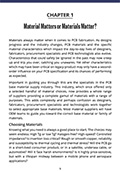
-
Chapter 2
Chapter 2
Chapter 2 looks into the latest in measuring and modelling. Which method provides a more accurate outcome? He also discusses correlation, and the increasingly complicated task of tracking down sources of errors.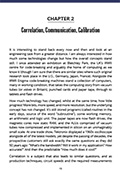
-
Chapter 3
Chapter 3
Chapter 3 takes on impedance measurement, and a variety of methods that can help you achieve repeatable, accurate results.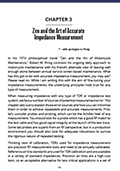
-
Chapter 4
Chapter 4
Chapter 4 takes the reader on a trip through a transmission line, from DC to the GHz region, across an FR-4 laminate, and explains how impedance, resistance, and length of the trace affect the journey.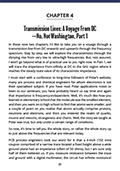
-
Chapter 5
Chapter 5
Chapter 5 continues the reader’s trip through a transmission line, with a focus on the mechanisms such as skin depth and dielectric loss that can cause losses in the line.
-
Chapter 6
Chapter 6
Chapter 6 poses the question, “When is a 10GHz transmission line not a 10GHz transmission line?” It depends upon how the line is modelled, and whether we ask the right questions.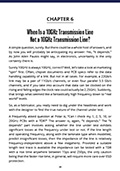
-
Chapter 7
Chapter 7
Chapter 7 slices into the materials themselves and explains why bulk Er differs from local Er, and discusses why there is no answer to “What is the of that material?”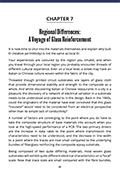
-
Chapter 8
Chapter 8
Chapter 8 follows the previous chapter’s peek inside the material and looks at methods that allow engineers to make intentional compromises and reduce the number of prototypes required.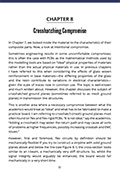
-
Chapter 9
Chapter 9
Chapter 9 investigates the tolerance in measurement systems, and the need to always measure data within the limits of measurement capability.